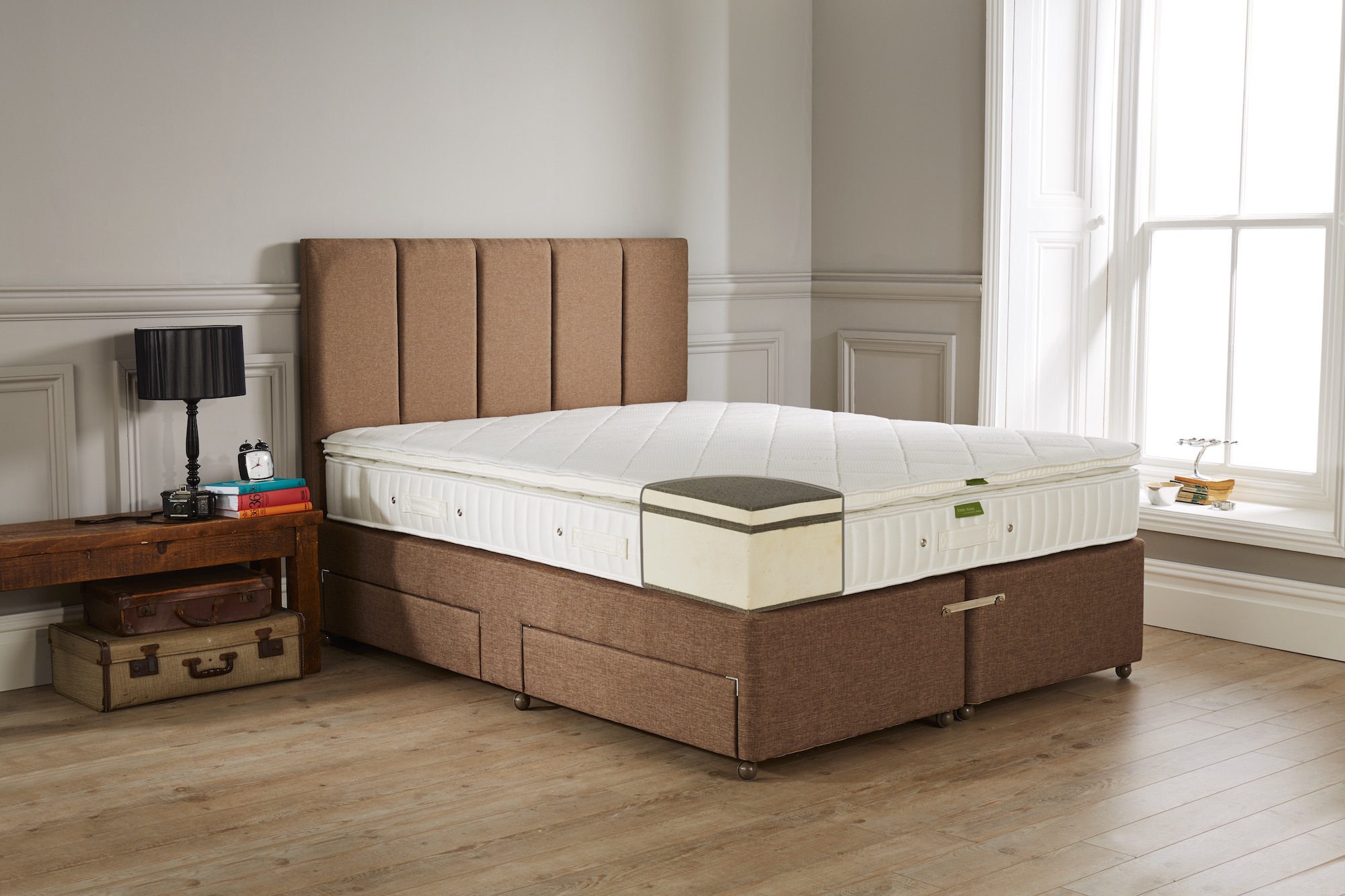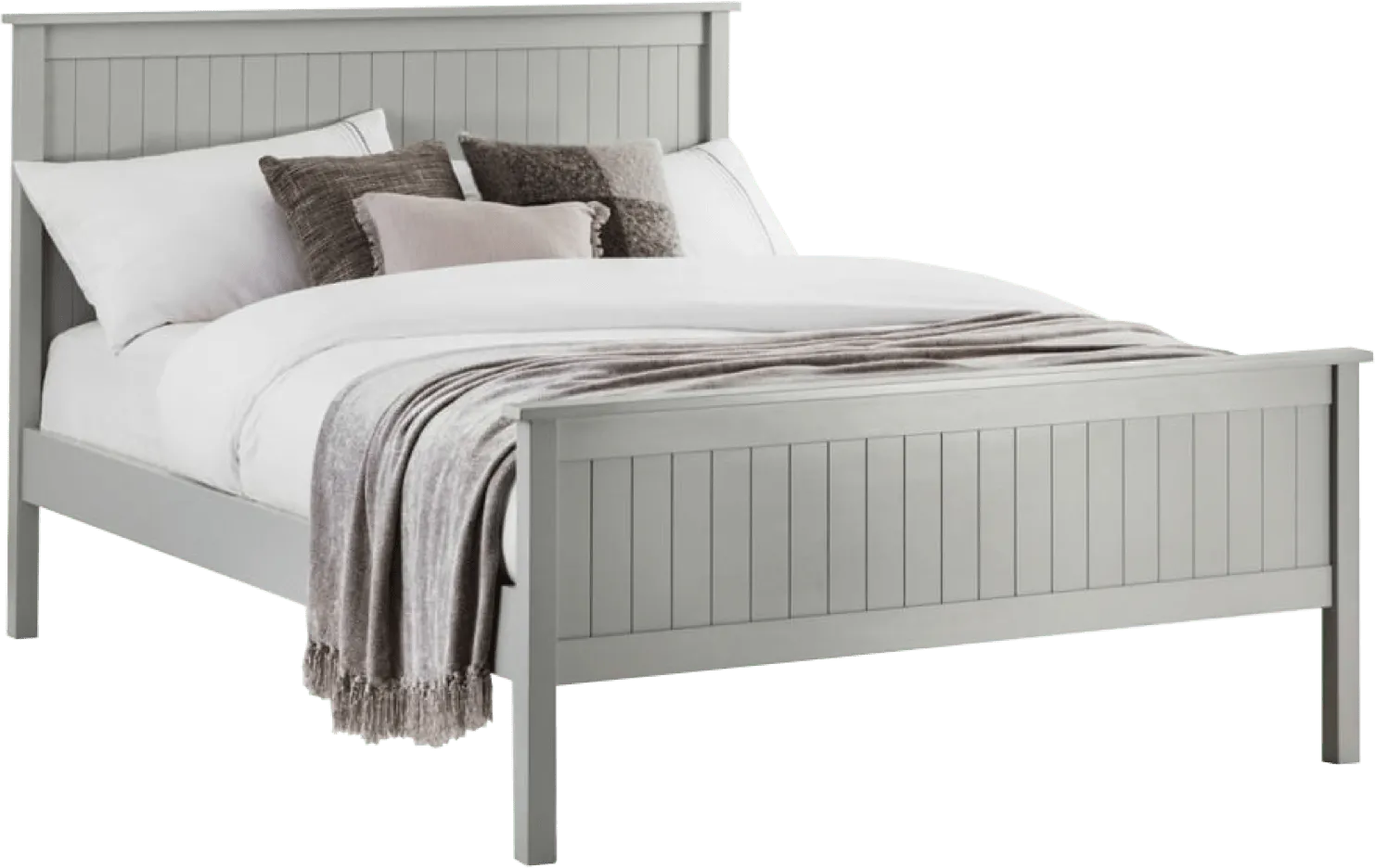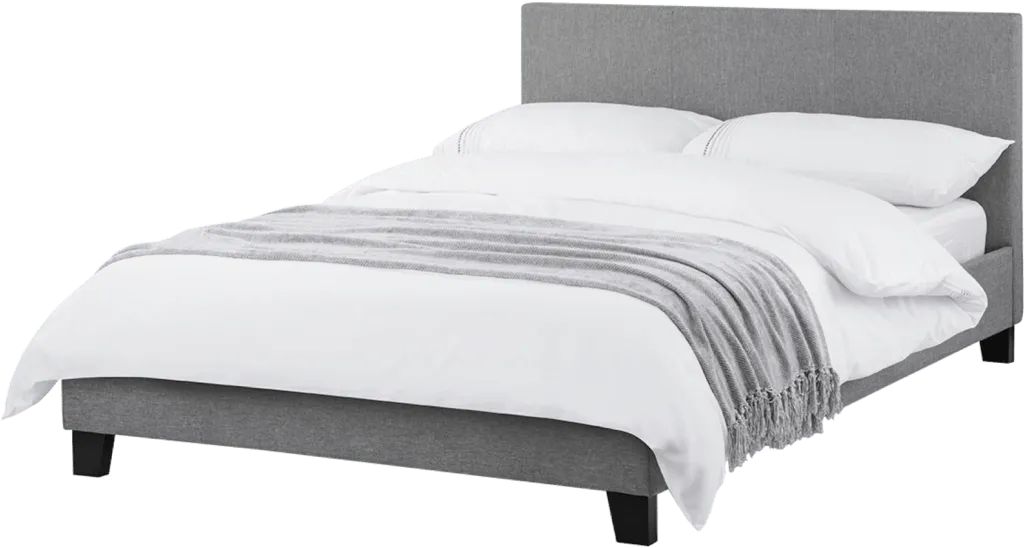Tempur Mattresses: What is Tempur memory foam?
Updated 2024: Tempur has become one of the most recognisable mattress brands in the market, offering unique mattress materials based on synthetic foams. Search any online mattress forum, and you will find people who love them and people who really dislike them based on feel heat retention and lifespan. Now, everyone has their own subjective feelings on all mattresses.
We thought we would dig a little bit deeper under the covers to help you assess whether a Tempur mattress is suitable for you.

What is a Tempur mattress?
Tempur mattresses are made of a pressure-relieving synthetic foam (similar but not the same as memory foam) that moulds to your body weight in bed. Allowing for a slow sink as the foam warms up and holds you in one position during the night. It is a dense foam that’s heavy and slow to respond.
Who are Tempur Pedic Internaqtional?
Tempur-Pedic International Inc. is credited as being the company that trialled and developed so-called memory foam and, through extensive advertising and promotion, brought the world’s attention to the benefits of this ‘pressure-relieving material’. Although the material was developed in the 1970s by NASA, it wasn’t until the early 90s that Tempur launched this Space Foam Technology for the domestic market.

Note: We acknowledge that the original companies involved, Dan Foam and Fagerdala World Foams’ contribution resulted in what is now known as Tempur World Inc. I use Tempur as a reference to their mattress range and product. Tempur recently acquired Sealy and are now known as Tempur-Sealy. The acquisition with Sealy took place on 27th Sept 2012. Making Tempur-Sealy the largest bed company in the world. Read into that what you will!
Tempur Mattress Models Uncovered
Tempur has a number of models in their range, all based on one-sided synthetic pressure-relieving foam. The choices with Tempur mattresses can feel endless, especially in trying to differentiate between each of the models.
The key when comparing and deciding on a Tempur mattress is to check the density of the foams used in each model. This density refers to firmness and allows you, to a certain degree, to work out if their mattress models are firm, medium, or soft.
- TEMPUR Contour which replaced the TEMPUR Original (firm)
- TEMPUR Sensation (medium)
- TEMPUR Cloud (medium soft)
- TEMPUR Hybrid (medium firm)
- Latex as an alternative to TEMPUR models
Tempur mattresses are all one-sided mattresses as the foam layers are built up off a reflex foam base. So you can only rotate them and not turn them. This has its benefits, as it means you never need to wrestle with their mattresses to turn or rotate them (though you really should if you want to even out mattress settlement.
The drawbacks of no-turn mattresses are that they are prone to settling at an alarmingly fast rate, and it also means you can only ever use one side of your mattress. Some mattress critics claim you only get half as much mattress for your money with one-sided no-turn mattresses like this.


How much is a Tempur Mattress
Tempur has several different models, with the 20cm ‘Original’ retailing at over £1500 (double) or 22cm Deluxe retailing at over £1700 (Double). High-end stores will have other models such as The Cloud, Tempur’s softest mattress and The Sensation, marketed as a springy medium mattress, with an equally high retail price. ]
Tempur has recently started rebranding models for certain retailers such as the bed retailer Dreams.
To keep things simple, there are three main models, the Tempur Original, Tempur Cloud and Tempur Sensation. These now come in varying heights, and some retailers use their own micro-branding, such as the ‘Tempur Cloud Deluxe’, which can lead to more confusion.
Tempur mattresses start at £1500 and are priced up to £3900
“Perceived Quality” is a sales technique whereby a purchasing decision is made purely based on price. You are going to assume that the higher-priced item is going to be a better-quality product. If a shop has two mattresses side by side, say for example, a Tempur mattress and an Ergo-Flex mattress that can be compared as a like-for-like option, the price asked then becomes the final decisive factor.
If a retailer or manufacturer has the balls to ask over £1500 for a product when there are equivalents available for roughly a third of the price, you are going to assume that the quality must be two-thirds better, But Is it?
Why are Tempur mattresses no turn?
We have written extensively about the drawbacks of a no-turn mattress. Now, some mattresses like Tempur and the other boxed mattresses such as Eve, Casper and Simba are all one-sided.
Why? It’s the way they are designed and made.
The foam layers start with a support layer and then get progressively softer as they are layered up. Meaning the mattress can not be turned as you’d be sleeping on the base.
You may ask why can’t they layer up on both sides. Well, the softer foam layers can withstand the consistent pressure and would end up being crushed over time, thus not returning to their original shape.
In our opinion, no-turn mattresses have a far shorter shelf life than a two-sided model as you can only use one side. This means you really need to make sure you’re rotating them monthly to even out settlement and wear.
What are the drawbacks of Tempur mattresses?
While Tempur-Pedic mattresses are highly regarded for their comfort and support, they also have some drawbacks that consumers should consider:
1. Price
Tempur-Pedic mattresses tend to be more expensive compared to traditional innerspring or foam mattresses. The high-cost materials and money spent on advanced technology used in Tempur-Pedic mattresses contribute to their higher price point, which may be prohibitive for some consumers. Especially given most king size

2. Tempur Heat Retention
Memory foam mattresses, including Tempur-Pedic, have a reputation for trapping heat and sleeping hot. The dense foam construction of Tempur mattresses can restrict airflow, along with the fact that all vasco foam traps heat to soften, leading to heat retention and potential discomfort for individuals who are sensitive to temperature changes during sleep.
If you are a hot sleeper foam mattresses are not advisable compared to natural fibre beds.
3. Initial Odour
Like many memory foam mattresses, Tempur-Pedic mattresses may emit a temporary off-gassing odor when first unpackaged. While this odour typically dissipates within a few days to a few weeks, it can be bothersome for some individuals, especially those with sensitivities to chemical smells.

4. Motion Transfer
While memory foam mattresses like Tempur-Pedic excel at isolating motion and reducing disturbance from movements, some people may find that they sink into the mattress too deeply, making it difficult to change positions or get out of bed easily.
5. Break-In Period of Tempur
Tempur-Pedic mattresses may require a break-in period for the foam to soften and conform to the body. During this time, some users may experience initial discomfort or stiffness until the mattress adjusts to their body contours. Break-in times for Tempur can take 4-8 weeks based on normal memory foam mattresses.

6. Weight of a Tempur Mattress
Tempur-Pedic mattresses are heavy and dense due to their high-density foam construction. This weight can make it challenging to move or rotate the mattress, especially for individuals with limited mobility or strength.
While Tempur-Pedic mattresses offer numerous benefits, including excellent pressure relief and support, it’s essential for consumers to weigh these drawbacks against their personal preferences and needs when considering a mattress purchase. Additionally, trying out a Tempur-Pedic mattress in person and researching customer reviews can help individuals make an informed decision about whether it’s the right choice for them.
Which sleeping position is suited to Tenpur Mattresses?
Tempur mattresses are designed to accommodate various sleep positions, making them suitable for a wide range of individuals. However, they are particularly well-suited for side and back sleepers due to their ability to contour to the body’s shape and provide targeted support.
- Side Sleepers: Side sleepers often benefit from the pressure-relieving properties of Tempur mattresses. The memory foam construction conforms to the curves of the body, particularly at the hips and shoulders, helping to alleviate pressure points and promote spinal alignment. This can reduce discomfort and prevent the development of pressure-related pain.
- Back Sleepers: Tempur mattresses are also suitable for back sleepers, as they provide even support across the entire body. The memory foam material helps distribute body weight evenly, reducing strain on the lower back and promoting proper spinal alignment. Back sleepers may find that Tempur mattresses offer the necessary support to maintain a neutral spine position throughout the night.
While Tempur mattresses can accommodate side and back sleepers effectively, they may not be the ideal choice for stomach sleepers.

Stomach sleepers often require a firmer mattress to prevent excessive sinking of the hips and pelvis, which can strain the lower back and lead to discomfort over time. Also, sleeping face first into synthetic foam can be uncomfortable when the mattress off-gasses and sleepers who are sensitive to the smell of synthetic foam.
However, some stomach sleepers may still find Tempur mattresses comfortable, particularly if they prefer a softer feel and minimal pressure on the abdomen.
Alternatives to Tempur Mattresses?
We don’t have an exact comparison to the Tempur mattress range. Why is this, you may ask. Well, we don’t rate memory foam and their equivalents at all due to their settlement complaints, heat retention and the fact they are all one-sided mattresses. Given the price point of the Tempur range, we believe that 100% Natural latex is a comparable offering with far fewer drawbacks when compared to synthetic foams.
Our Fusion range of 100% Natural Latex mattresses are two-sided and offers a slow pressure relief feel without the need to retain as much heat as synthetic foams. Latex is also far faster to respond to changes in movement during the night. Synthetic foam and memory foam mattresses have long been criticised for holding you too rigidly in the ‘dip’ that it created around you.
Latex is completely different as it only responds to pressure, not heat. When you need to move, it returns to its original shape almost immediately. Meaning it’s easier to turn, and you don’t get as hot at night. All whilst still offering ultimate pressure relief for sleepers.

We have written an article about the comparative feel to Tempur mattresses. This article gives much more detail on the makeup and composition of other mattresses in comparison to the Tempur specifications. One big difference is that our Fusion latex models all come with removable toppers that allow you to turn them and extend the longevity of your mattress along with the mattress itself, a drawback often made to Tempurs’ one-sided mattress range.

Is a Tempur mattress worth the cost?
A Tempur bed mattress is recognised to be the market leader, no doubt about it. But this does not mean it will suit everybody. Their ‘material’ has a general density of 85kg/m3, whereas in comparison, British Vita Vasco foams have a general density of around 55-70, but British Vita (and other foam converting companies) do have comparable products with densities in excess of 80kg/m3.
That said, most of the 80kg plus foams are imported in the UK from the far-east as there simply isn’t the market for such dense firm foams; most people want memory foam to be a pressure relieving. This means the market in bed manufacturing usually uses 40-60kg foams for this purpose.
The denser foams found in Tempur and Ergoflex require significant heat, compared to, say, Latex, to mould, so they do get warm, and this is one of the main complaints about Tempur and Memory foam products, especially if you’re already a warm sleeper. We have a page that explains all about foam densities and data sheets here.
If you’re wondering what you should expect for your money from a traditional pocket sprung mattress the guide below should help you. Obviously these are a different construction method to Tempur mattresses but they should help provide a comprehensive picture when choosing a new mattress.
| How much to spend on a double mattress? | What can I expect for my money? |
|---|---|
| Under £500 | Will not get you much at best a 13.5 gauge open coil/cage sprung with a thin polyester layer or a solid foam mattress. |
| £500 | Entry level spunbond springs with some form of synthetic upholstery. Usually one sided mattresses. |
| £750 | The beginnings of a basic pocket springs unit with 800 – 1000 count. No substantial amount of filling other than foams and synthetic materials. Two sided models. |
| £1000 | Should get you away from most low ranges and into the mid-range pocket spring models. |
| £1250 | Should get you a decent pocket sprung mattress with some Natural Fibre content. |
| £1500 | Should get you many manufacturers mid-range models with Natural Fibres |
| £1500-£2000 | Should get you a Hand Made primarily Natural Fibre Quality Mattress |
| £2000+ | You should expect 100% Natural Fibres and Traditional Hand Made Construction Method. |
| £5000+ | A Bespoke Hand Made Sleep System, High-end Spring Units & Featuring the Worlds Most Luxurious Natural Fibres. |
Better Value?
It is understood that, in (their words) a standard test (draw your own conclusions as to what this means), the thickness loss of Tempur after 80,000 compressions are less than 5 per cent compared to approximately 10-15 per cent for highly elastic polyurethane foam.
Personally, I would want to know if a like-for-like ‘foam’ was used in the test, say a close matched 80–85kg/m3, but I cannot find this essential piece of info.
I do draw your attention to a clause in Tempur’s guarantee that states any indentation of less than 2cm will not be considered a reason for the claim. Be aware that as a general rule from all manufacturers, visible and permanent indentations in memory foam of less than 2 – 2.5cm will not be seen as a defect in the mattress. A quick search on the internet will throw up many consumer complaints that it is this very visible indentation that causes them the most concern. This is always a concern with memory or pressure-relieving foam because all these mattresses are one sided so you only have one side to use.
John Ryan models aim to compensate and reduce this by supplying them with turnable removable toppers.
Tempur is a highly successful and quality product, what we are asking is, ‘is that quality product worth the price tag?’ Given the alternatives such as the Fusion 100% Natural Latex range there are plenty of other alternatives to investigate before you part with your cash.
If you need any more advice on suitable models please contact us on 0161 437 4419 or visit our shop.


Ask us a question.
There are over 6000 questions and answers submitted by you on all questions about mattresses and bed problems. Enter a keyword such as Vi Spring, John Lewis beds, bad back or Memory Foam and see if your question has already been answered.
You can filter popular questions by the categories below. If you can’t find an answer, ask a new question below. We aim to respond to all questions within one working day.




































 Mattresses
Mattresses  Take our mattress quiz
Take our mattress quiz  Contact
Contact  About us
About us 


